◇Background to the decision to expand overseas
With this in mind, Daitoh Kindergarten chose Malaysia, a multi-ethnic and multilingual society with a strong passion for education, as the first destination for its global expansion.
The unique educational methods that Daitoh Kindergarten has cultivated in Japan for over half a century, such as discipline, good posture(*1), flash cards(*2), and the 100-bead abacus(*3), have the potential to foster children’s independence, cooperativeness, emotional development, thinking ability, communication skills, and the power to pursue their dreams. As interest in Japanese-style early childhood education continues to grow across Asia, Malaysia’s social stability and easy access to other ASEAN countries were the deciding factors in choosing the country as the starting point.
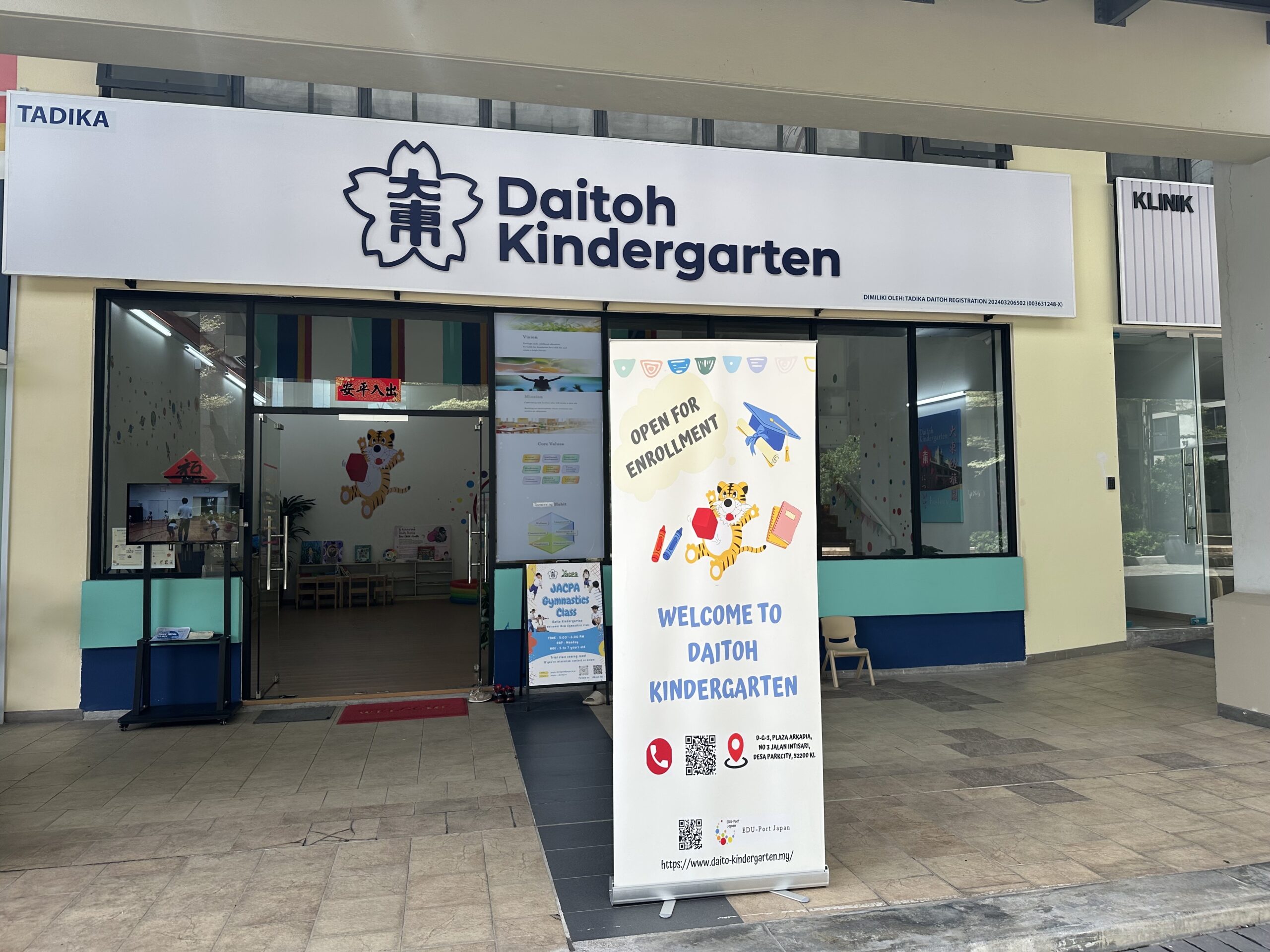
◇Challenges and ingenuity in the classroom
Nevertheless, the smiles of the Malaysian children as they exclaimed “I did it!” touched the hearts of the local teachers, nurturing their confidence and pride. Before long, a sense of unity as a team was born, and the challenges turned into accomplishments.
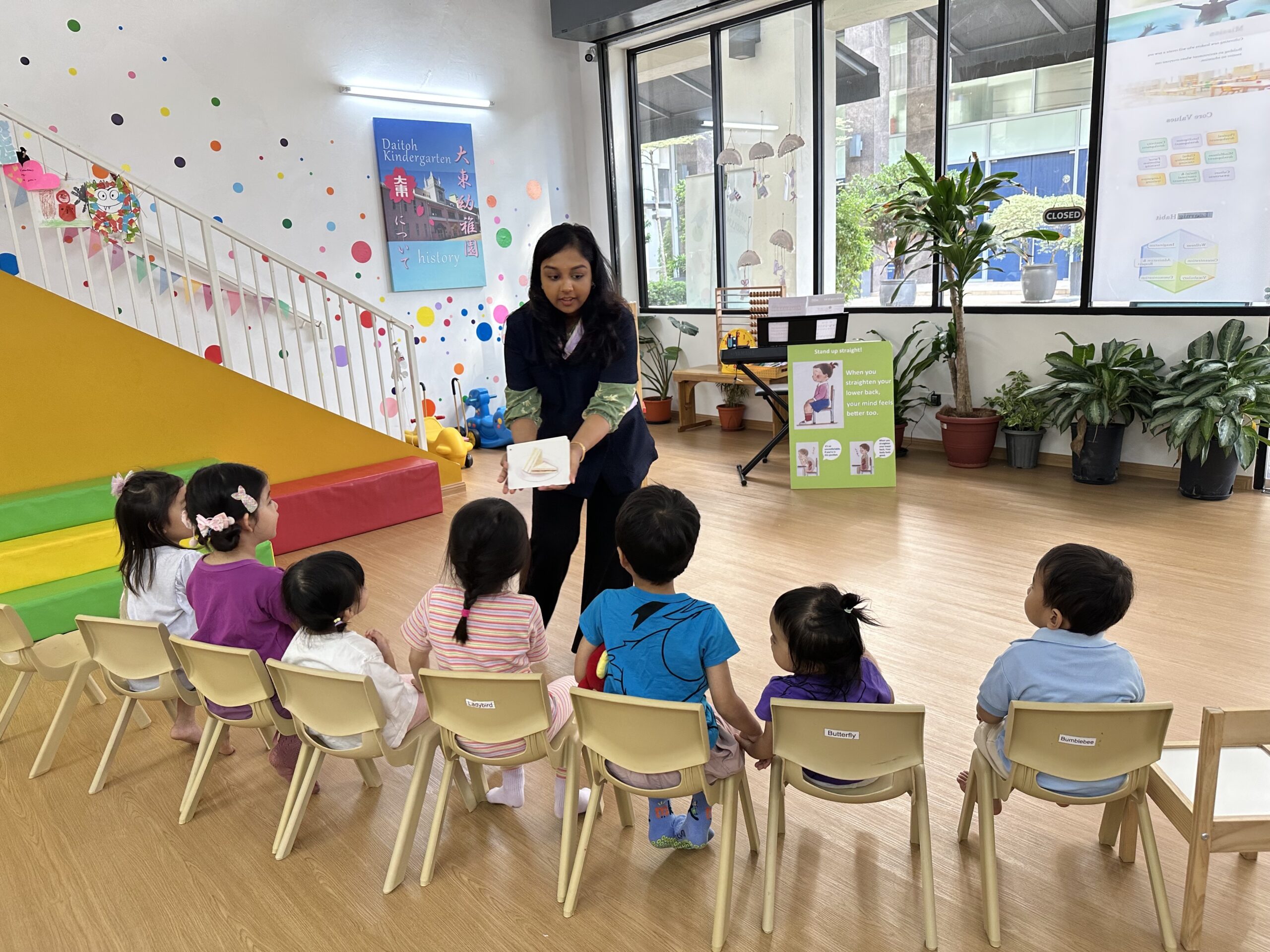
◇Morning routine
This routine blends play and learning naturally, and serves as a foundation for developing the children’s concentration, ability to express themselves, and cooperativeness.
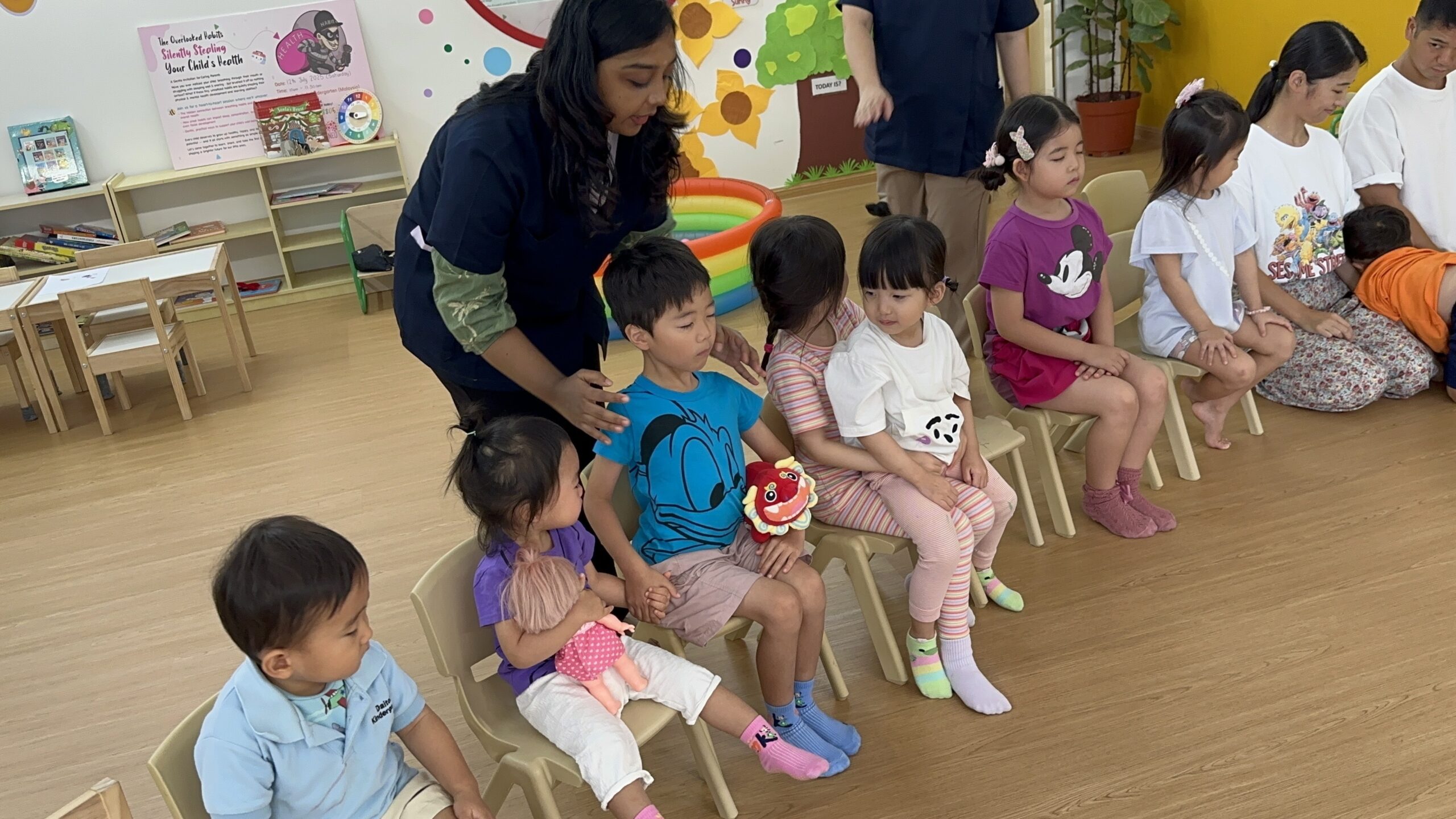
◇ Differences and integration between Japan and Malaysia
At Daitoh Kindergarten, however, the time before and after the morning assembly is devoted to posture training, greetings, songs, and rhythmical exercises to prepare both mind and body. After that, activities involving letters and numbers are conducted in a structured way in short sessions and incorporating elements of play, according to each child’s developmental stage and motivation.
Since the introduction of this Japanese-style education, parents have shared positive feedback, such as ”Even at home his posture is good” and ”She greets other people cheerfully on her own initiative.”
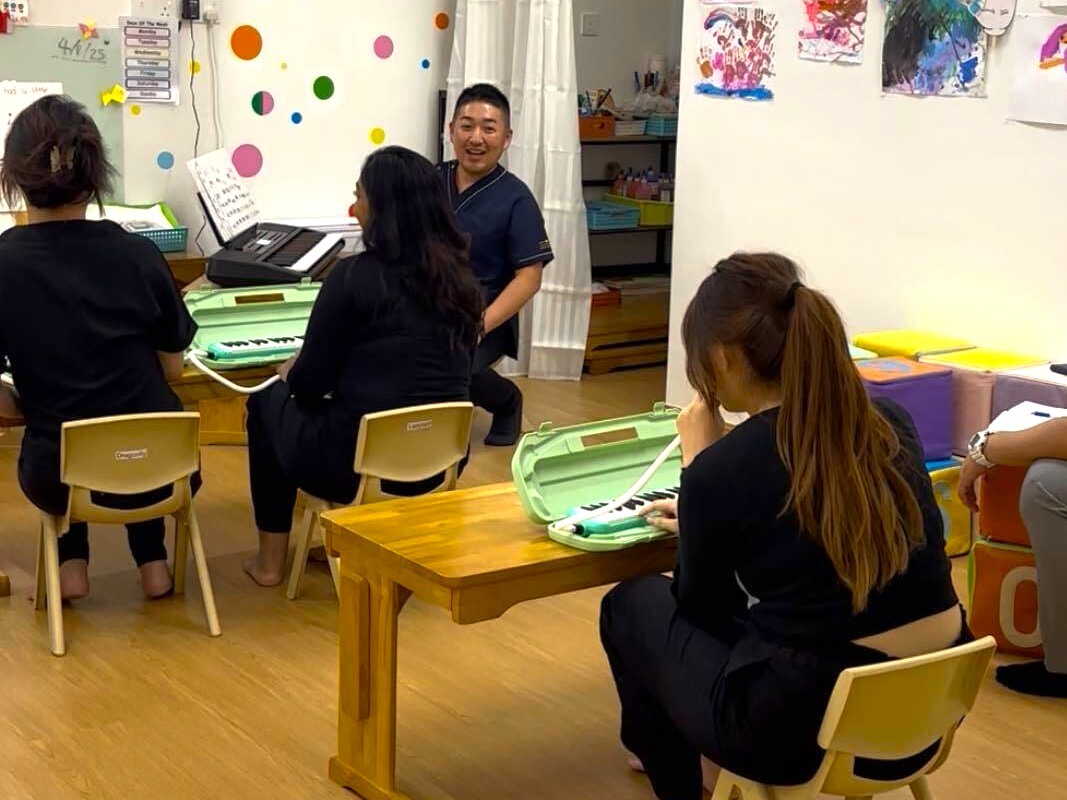
◇Effects and results
The Daito method has produced significant changes in the children over a short period of time.
・Sitting up straight and concentrating
・Singing loudly and speaking confidently
・Listening intently to the teacher
・Showing a natural curiosity toward numbers and characters
The effects of posture training were especially noticeable, and the local teachers were amazed at the children’s improved concentration and good manners.
-
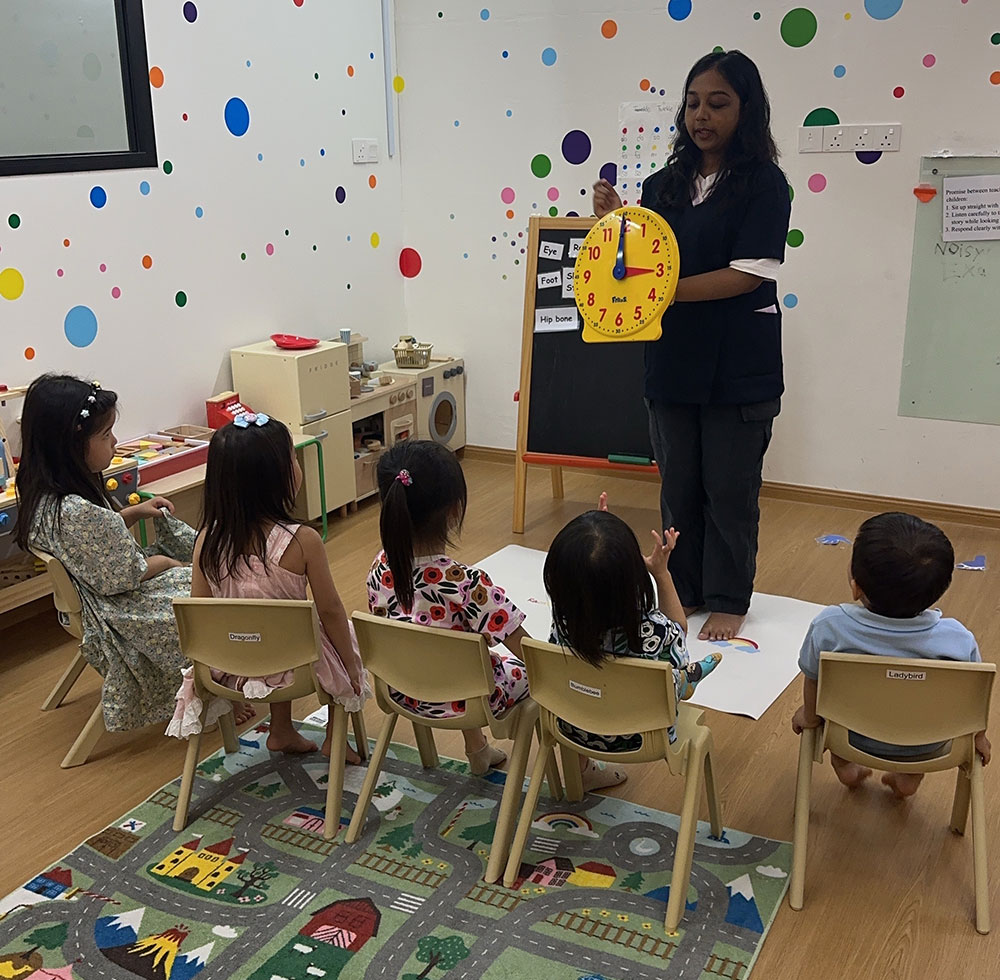 Learning to tell the time
Learning to tell the time -
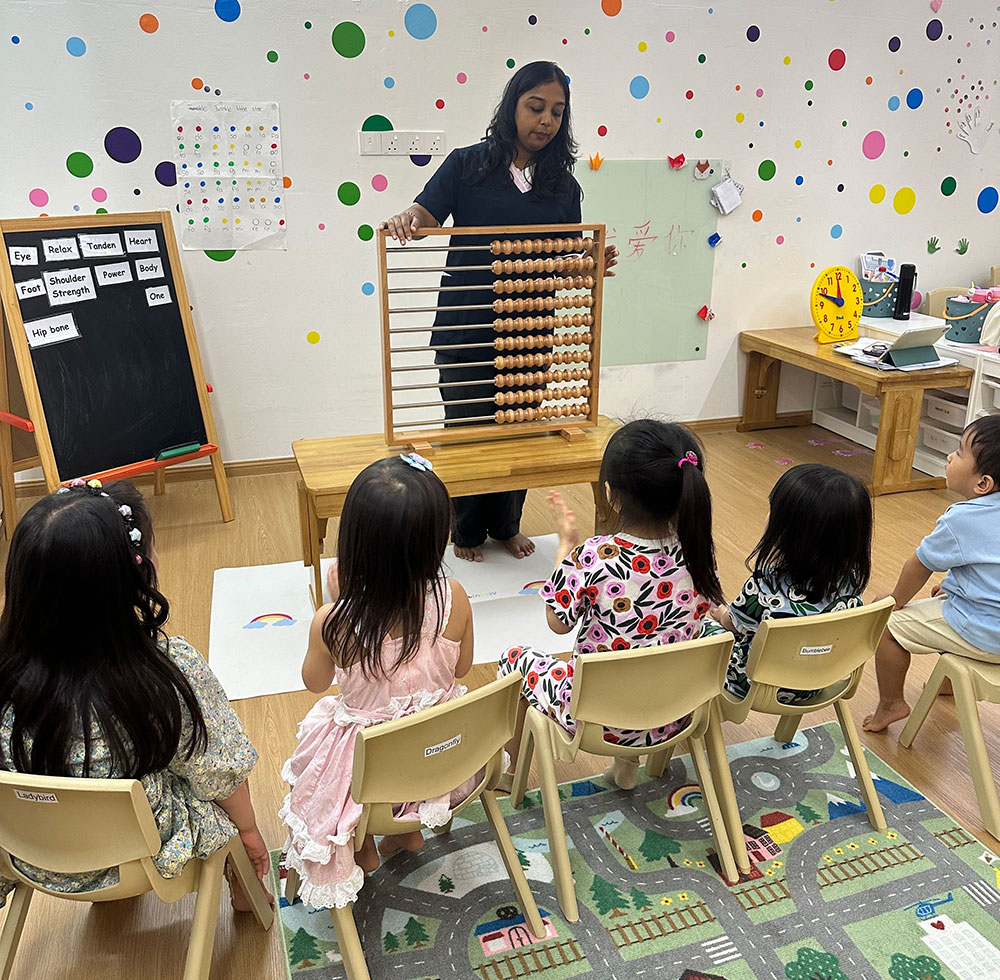 Learning to use a 100-bead abacus
Learning to use a 100-bead abacus
◇Significance of EDU-Port recognition
While we faced many challenges in Malaysia, including differences in language, culture, and education systems, the concrete examples of overseas practices shared by other platform members were extremely helpful. In particular, the idea of “not simply importing Japanese-style education as it is, but integrating it while respecting the local culture and the individuality of the children” was an important perspective that we learned through these examples.
In fact, amid repeated training sessions and the creation of teaching materials with local staff in preparation for opening the kindergarten in Malaysia, we continued to develop multicultural nursery education while remaining committed to distinctly Japanese elements such as discipline, good posture and greetings. Additionally, in collaboration with the Japanese-style physical education program supported by EDU-Port Japan, we invited PE specialists to our Malaysian kindergarten to introduce Japanese-style physical education activities.
Through instruction that values rhythm, good posture, and teamwork – qualities unique to Japan – local children are also experiencing moments where they cultivate courtesy and consideration for others while enjoying physical activity.
Being connected with others who share the same goal of “bringing Japanese education to the world” is a source of great encouragement to everyone involved and helps to earn the trust of the parents and educators.
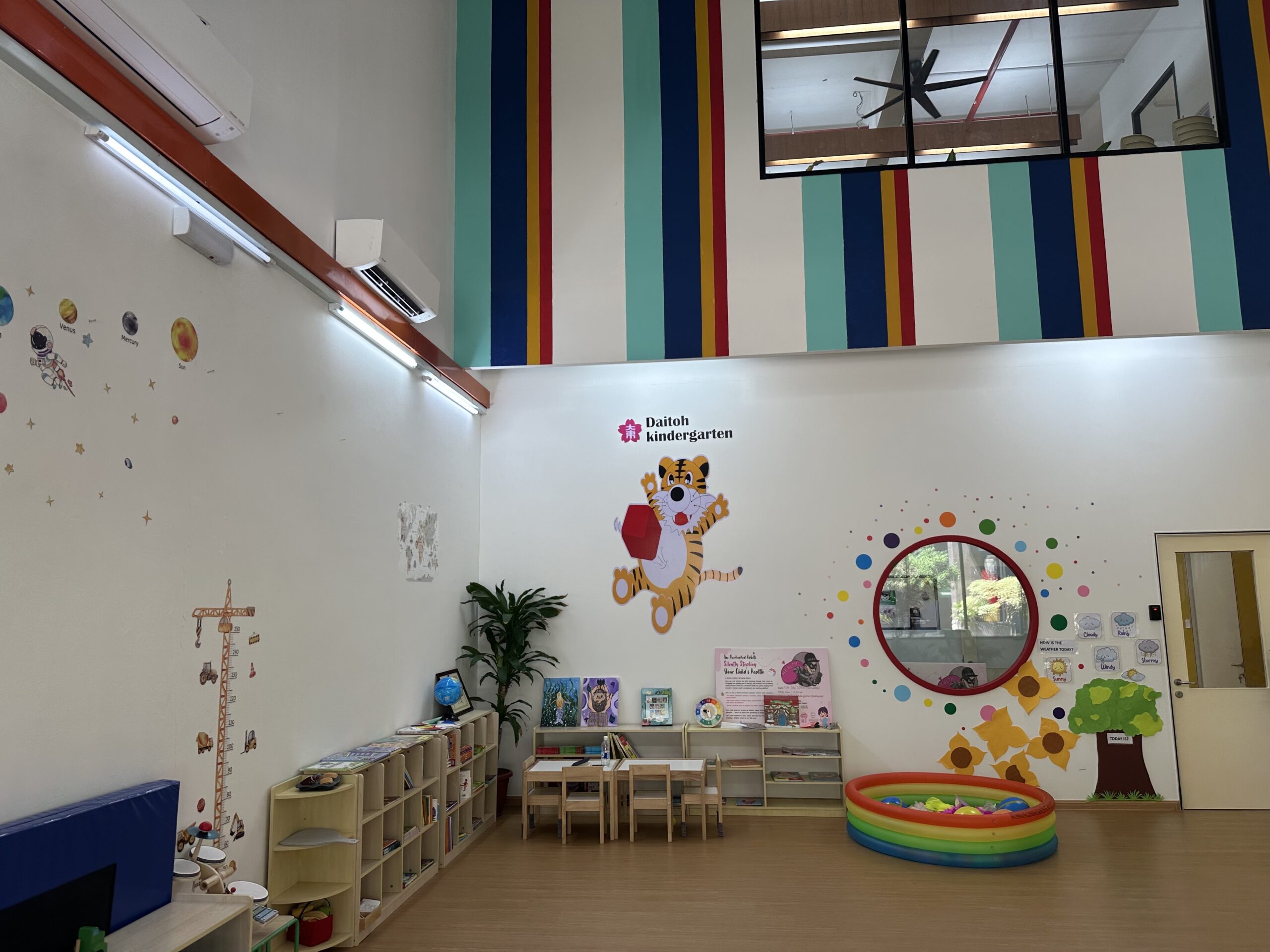
Early childhood education is the process of nurturing the roots of human growth.
What Daitoh Kindergarten values is that children truly feel that “learning is fun” and “I can do it if I try,” and that they acquire the ability to carve out their own future.
Our challenge in Malaysia is just the first step. Each and every smiling child in our kindergarten is proof of their potential. And those smiles are the energy that will fuel our next challenge. Through the Daito method and Japanese-style education, we will bring the joy of learning and options for the future to children around the world.
From Malaysia to Asia, and to the world!
【Daitoh Preschool Malaysia Branch School】
Opened: February 1, 2025
Number of children: 5 (including 2 Japanese)
Number of teachers: 4
Japanese instructors visit on a short-term basis to provide direct guidance.
(*1) Good Posture Education: Time to get mind and body in shape
At Daitoh Kindergarten, the day begins with posture training – shoulders back, back straight, breathing calmly.
This training time is “important to bring mind and body together.” Correct posture calms the mind, naturally fostering concentration and motivation. Starting the morning with “stillness” provides the strength for “movement” later.
(*2) Flash cards: Enjoying words and knowledge through rhythm
Flash cards shown at a good pace allow the children to enjoy rhythmically learning words and knowledge. Their eyes light up as they focus intently on each card. As they play, their vocabulary naturally increases, and their memory, concentration, and comprehension rapidly develop. This rhythmical, fast-paced style of learning stimulates their eagerness to learn.
(*3) 100-bead abacus: Studying the world of numbers by seeing and reciting
The 100-bead abacus helps children get a feel for how numbers work. As they move the beads to count, compare, and combine numbers, they not only learn to understand numbers, but also to like numbers. Learning with their eyes and ears teaches children that numbers are fun and develops their thinking skills.
(*4) Squatting and gathering up all their strength, then standing up shouting “Yoisho!” and jumping rhythmically while saying, “Let’s do our best today!” before finally raising their fists high in the air and shouting “Oh!” in unison.
This exercise is more than just jumping; it builds strong core and leg muscles while awakening their minds and bodies in just a few seconds – a real “wake-up switch!” Every morning, the children do this exercise with smiles and full-on energy, naturally developing a sense of rhythm, concentration, and readiness.
“Who was the most energetic today?” “Today’s champion is …!” Every time they hear this, the children’s smiles and laughter fill the kindergarten. It is a time full of smiles and energy.







